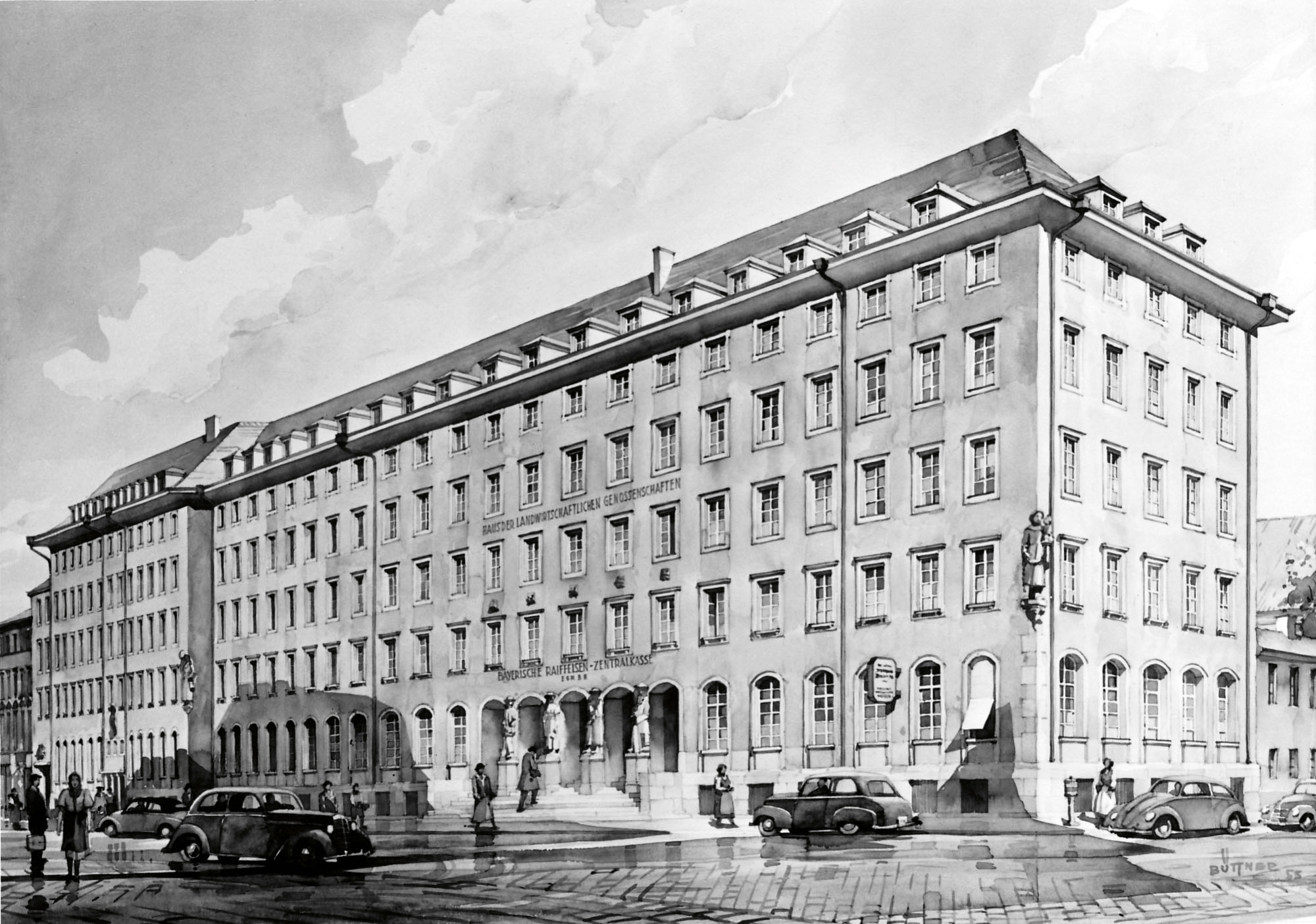|
Halle–Cottbus Railway
The Halle–Cottbus railway is a 176 km long double-track electrified main line in the German states of Saxony-Anhalt, Saxony and Brandenburg. It was opened in 1871 and 1872. It formed the central section of the network of the Halle-Sorau-Guben Railway Company. Today it is part of a connection between the Central Germany and Poland. Before German reunification, the line was also served by express trains, but it is now mainly used by regional and international freight traffic. History On 1 December 1871, the Halle-Sorau-Guben Railway Company (''Halle-Sorau-Gubener Eisenbahn'', HSGE) opened the Cottbus– Falkenberg/Elster section after its extension towards Guben was opened earlier the same year. Six months later, on 1 May 1872, trains ran via Falkenberg to Eilenburg and, two more months later, on 30 June 1872, operations on the line were extended as far as Halle. It did not connect with many of the former Prussian private railways that it crossed, as there were no at-g ... [...More Info...] [...Related Items...] OR: [Wikipedia] [Google] [Baidu] |
Saxony-Anhalt
Saxony-Anhalt (german: Sachsen-Anhalt ; nds, Sassen-Anholt) is a state of Germany, bordering the states of Brandenburg, Saxony, Thuringia and Lower Saxony. It covers an area of and has a population of 2.18 million inhabitants, making it the 8th-largest state in Germany by area and the 11th-largest by population. Its capital is Magdeburg and its largest city is Halle (Saale). The state of Saxony-Anhalt was formed in July 1945 after World War II, when the Soviet army administration in Allied-occupied Germany formed it from the former Prussian Province of Saxony and the Free State of Anhalt. Saxony-Anhalt became part of the German Democratic Republic in 1949, but was dissolved in 1952 during administrative reforms and its territory divided into the districts of Halle and Magdeburg. Following German reunification the state of Saxony-Anhalt was re-established in 1990 and became one of the new states of the Federal Republic of Germany. Saxony-Anhalt is renowned for its ri ... [...More Info...] [...Related Items...] OR: [Wikipedia] [Google] [Baidu] |
Delitzsch
Delitzsch (; Slavic: ''delč'' or ''delcz'' for hill) is a town in Saxony in Germany, 20 km north of Leipzig and 30 km east of Halle (Saale). With 24,850 inhabitants at the end of 2015, it is the largest town in the district of Nordsachsen. Archaeological evidence outside the town limits points to a settlement dating from the Neolithic Age. The first documented mention of Delitzsch dates from 1166 and it later became the Elector of Saxony's residence in the 17th and 18th centuries. The old town is well preserved, with several plazas, citizens' and patrician houses, towers, a baroque castle and the town's fortifications. Delitzsch and its surrounding area contain water areas, hiking and cycling networks and nature reserves. Geography Location Delitzsch is located in the northwestern part of Nordsachsen in Saxony, at an altitude of 94 meters above sea level. Due to its location on the border with Saxony-Anhalt, Delitzsch is the northernmost town in Saxony. It is situ ... [...More Info...] [...Related Items...] OR: [Wikipedia] [Google] [Baidu] |
Doberschütz
Doberschütz is a municipality in the district of Nordsachsen, in Saxony, Germany. It has an area of 79,81 km² and a population of 4,082 (as of December 31, 2020). References Nordsachsen {{Nordsachsen-geo-stub ... [...More Info...] [...Related Items...] OR: [Wikipedia] [Google] [Baidu] |
Eilenburg Ost Station
Eilenburg (; hsb, Jiłow) is a town in Germany. It lies in the district of Nordsachsen in Saxony, approximately 20 km northeast of the city of Leipzig. Geography Eilenburg lies at the banks of the river Mulde at the southwestern edge of the Düben Heath wildlife park. The town is subdivided into three urban districts: ''Berg'', ''Mitte'' and ''Ost'' and six rural districts named ''Behlitz'', ''Hainichen'', ''Kospa'', ''Pressen'', ''Wedelwitz'' and ''Zschettgau''. Neighbouring towns and cities are Leipzig (20 kilometres distant), Delitzsch (21), Bad Düben (16), Torgau (25) and Wurzen (12). History Eilenburg Castle was first mentioned on 29 July 961 in a document by Otto I the Great, Otto I. as ''civitas Ilburg''. The name has Slavic origin and means ''town with clay deposits''. A settlement of tradespeople probably developed from the 11th century in the vicinity of the castle. The town was incorporated in the Margravate of Meissen in 1386. In the 16th century E ... [...More Info...] [...Related Items...] OR: [Wikipedia] [Google] [Baidu] |
Mulde
The Mulde () is a river in Saxony and Saxony-Anhalt, Germany. It is a left tributary of the Elbe and is long. The river is formed by the confluence, near Colditz, of the Zwickauer Mulde (running through Zwickau) and the Freiberger Mulde (with Freiberg on its banks), both rising from the Ore Mountains. From here the river runs northwards through Saxony ( Grimma, Wurzen, Eilenburg, Bad Düben) and Saxony-Anhalt ( Jeßnitz and Dessau, the old capital of Anhalt). The Mulde flows into the Elbe north of Dessau. 1911 Encyclopædia Britannica In August 2002 a flood caused severe damage, that even endangered the UNESCO World Heritage Site "Dessau-Wörlitzer Gartenreich" and the city Dessau. Its name could be derived from Old German (possibly Gothic) "Mulda" (𐌼ᚢ𐌻ᛞᚨ), meaning "dust" and a cognate of English "mould A mold () or mould () is one of the structures certain fungi can form. The dust-like, colored appearance of molds is due to the formation of sp ... [...More Info...] [...Related Items...] OR: [Wikipedia] [Google] [Baidu] |
Eilenburg Station
Eilenburg station is one of two railway stations in the district town of Eilenburg in the German state of Saxony. It is classified by Deutsche Bahn as a category 4 station. The station is located on the southeastern edge of the town. The station was opened in 1871 and gained importance over time in passenger and freight transport. Many workplaces were associated with it. Today, regional trains run to Leipzig, Halle (Saale), Hoyerswerda and Cottbus. Since the commissioning of the Leipzig City Tunnel, trains of the Mitteldeutschland S-Bahn stop in Eilenburg. History The town of Eilenburg was in an area that was peripheral to Prussia, having been ceded to it by the Kingdom of Saxony at the Congress of Vienna. It was not until 1868, when there was already a dense railway network that the Halle-Sorau-Guben Railway Company (german: Halle-Sorau-Gubener Eisenbahn-Gesellschaft) was granted a concession and permit for the construction of a railway to it. The station building was built i ... [...More Info...] [...Related Items...] OR: [Wikipedia] [Google] [Baidu] |
Leipzig–Eilenburg Railway
The Leipzig–Eilenburg railway is a two-track, electrified mainline railway in the German state of Saxony, originally built and operated by the Halle-Sorau-Guben Railway Company (german: Halle-Sorau-Gubener Eisenbahn-Gesellschaft) as the Eilenburg Railway (''Eilenburger Eisenbahn''). It runs from Leipzig to Eilenburg and is part of the long-distance connection from Leipzig to Cottbus. History The line branches off in Eilenburg from the Halle–Cottbus railway, which was built in 1872. The line runs via Jesewitz and Taucha to Leipzig and is 23.6 km long. On 1 November 1874, the route was opened as a connection to the Leipzig–Dresden railway. In Leipzig, it terminated at the Eilenburger Bahnhof (Eilenburg station), which at that time was on the eastern outskirts of the city. In 1884, the line, along with rest of the Hall-Sorau-Guben Railway, was nationalised and became part of the Prussian state railways and on 1 April 1920 it was absorbed into Deutsche Reich ... [...More Info...] [...Related Items...] OR: [Wikipedia] [Google] [Baidu] |
BayWa
BayWa AG (until 1972: ''Bayerische Warenvermittlung landwirtschaftlicher Genossenschaften AG'') is an internationally active group headquartered in Munich. Originally founded to support domestic agriculture, the company expanded its activities to the construction and energy sectors. BayWa is represented in more than 50 countries through its subsidiaries and holdings. The shareholder structure is still determined by the cooperative sector, which has shaped the corporate culture since its founding. History Foundation and early years BayWa's history goes back to the Bayerische Zentral-Darlehenskasse (BZDK), which was founded in 1893 and was active in both the banking and commodities business. One of its central tasks was to enable farmers to purchase means of production at low cost and to market their products profitably. In 1920, the BZDK had hundreds of warehouses for grain, artificial fertilizers, feedstuffs, and machinery, mainly in southern Germany. As a result ... [...More Info...] [...Related Items...] OR: [Wikipedia] [Google] [Baidu] |
Krensitz
Krostitz is a municipality in the district of Nordsachsen, in Saxony, Germany. It is best known for its brewery which brews Ur-Krostitzer beer. History King Gustavus Adolphus of Sweden stayed here in 1631 before the Battle of Breitenfeld (1631). From 1815 to 1944, Krostitz was part of the Prussian Province of Saxony, from 1944 to 1945 of the Province of Halle-Merseburg The Province of Halle-Merseburg (german: link=no, Provinz Halle-Merseburg) was a province of the Free State of Prussia from 1944 to 1945. The provincial capital was the city Merseburg. Halle-Merseburg was created on 1 July 1944, out of Regie ..., from 1945 to 1952 of the State of Saxony-Anhalt, from 1952 to 1990 of the Bezirk Leipzig of East Germany and since 1990 of Saxony. References Nordsachsen {{Nordsachsen-geo-stub ... [...More Info...] [...Related Items...] OR: [Wikipedia] [Google] [Baidu] |
.jpg)




